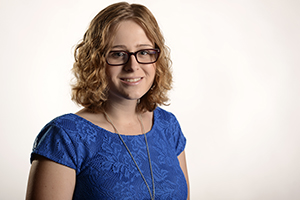Opinion: Cutting PBS would hurt American students
October 8, 2012
Lyndsey Schley
Lyndsey Schley is a sophomore news major and columnist for the Daily Kent Stater.
Contact her at [email protected].
Big Bird is in the unemployment line. Bert and Ernie have lost their apartment and are now homeless. Elmo had to give up Dorothy because he could not afford to feed her.
These are the sorts of strange, sad images that passed through my head when Republican Party presidential nominee Mitt Romney said that he would cut funding to PBS at the Oct. 3 debate.
PBS has a number of programs that would probably be picked up by another network if it were to fold. However, many of these programs, such as “Sesame Street” and “Nova,” would probably be taken away from the people who need them most.
“Sesame Street” premiered in 1969 aiming to educate children in a way they enjoyed. This program could bring basic skills to any child in a family with a television set. Programmers hoped that this could help children whose families could not afford kindergarten or preschool learn some basic skills and catch up to their classmates.
Since then, children’s television has become a thriving industry, and PBS has expanded its offerings. While networks like Nickelodeon, Cartoon Network and Disney Channel may have educational programming, not all families can afford anything past basic antenna television. These families are the group that needs this educational programming more than anyone.
These programs not only help children learn, but help them love learning. According to PBS, children who watch “Sesame Street” in preschool read for fun more in high school and get higher grades in English, math and science. Preschoolers from low-income families who participated in PBS’ Raising Readers program outscored their classmates.
But preschoolers are not the only people who would miss out on education if PBS closed its doors. According to PBS, only 1 percent of Americans have taken an astronomy course, but 3 million viewers tune in every week to learn about the universe with the program “Nova.” The show has expanded its scope and now offers resources to help teachers present science, physics, history and more to their students. According to valuepbs.org, Nova is the No. 1 video resource in U.S. high schools.
According to PBS, its federal subsidy only costs about $1.35 per person per year, and for every dollar in federal funding it receives, the station raises $6 of its own. A study conducted by Congress earlier this year stated PBS would probably fold without the federal aid.
As a kid, I learned the wonders of a library from “Arthur,” expanded my vocabulary with “Sesame Street” and experimented with science with “Bill Nye, the Science Guy.” These shows did not just expand my mind; I enjoyed every minute of them. I made a sad “aww” every day when the kid shows were over.
If Romney wants to stand up for education the way he claims, he needs to make sure he does not cut away one of American educators’ greatest assets. If we cut the deficit this way, it will cost more than it will save, especially to Americans who need the most help.

























